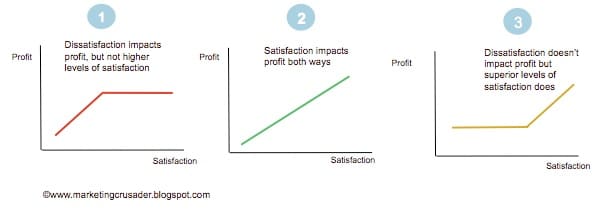I am a strong believer in the notion that the ultimate goal of any research program is to drive business results. Customer satisfaction research is no different. I came across an interesting perspective on customer satisfaction research in Research Magazine and it got me thinking.
I think, many a times, customer satisfaction is used as a company-wide KPI without truly understanding how it drives business results, i.e. how customer satisfaction links with key business outcomes such as sales, market share, profit or even share price. I think understanding this causality with business measures is the first step in designing an effective program. I think it is crucial for any business to understand the impact that relative levels of customer satisfaction have on the business. For example, does it make more business sense to convert ‘satisfied’ customers to ‘very satisfied’ OR rather to convert ‘dissatisfied’ customers to ‘satisfied’?
One way of identifying the key levers is by understanding the nature of the relationship customer satisfaction has with business measures. This relationship could be one of the following:
Scenario 1 is a classic example of a case where the true focus of research must be on ‘dissatisfaction’ rather than ‘satisfaction’, given that higher gains may not be achieved by delivering superior customer experience levels. In such cases, the research must be designed and tailored to focus specifically on the dissatisfied segment, and how to improve their experiences.
Scenario 2 is an example of a business where satisfaction or customer experience is a critical part of the overall offering (e.g., the airline industry). Here, the research program must be more holistic; and designed to not only address poor experience levels but also build and drive superior experiences.
Scenario 3 is an example of a business where customer experience is not part of the overall promise/ offering but where superior customer experience can be leveraged to build competitive advantage. Here, the focus of the business and research programs must be on converting the ‘satisfied’ into ‘very satisfied’, and even further into promoters or advocates.
One still needs to track customer satisfaction with all customers as a high-level KPI – however, prioritizing further research based on the above will not only help in getting the biggest bang for the buck from these programs, but also help in operationalizing the results internally.

